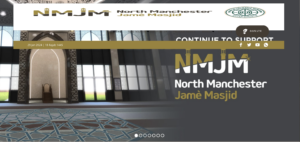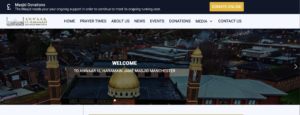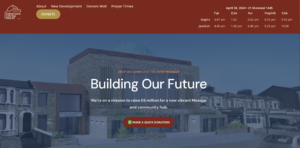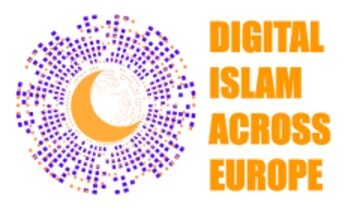
Gary R Bunt (UK Team and Website data analysis)
Anna Grasso (UK Team and Website data analysis)
This archive is part of the Digital Islam Across Europe project’s collection. One of the DigitIslam project outputs focuses on website data and collection analysis. The objective is to identify, catalogue and analyse Muslim organisations’ and actors’ websites (Online Islamic Environments or OIEs) from these different countries.1
This collection showcases websites of some of the mosques in the UK representing different religious branches (Sunni, Shia, Ahmadiyya). We included mosques that have an important online presence as well as those that were mentioned during our quantitative survey or qualitative interviews. Research on mosques in the UK is a growing subject area2.
Most of the mosques in our collection are located in Greater London. Nonetheless, we also find websites of mosques based in Birmingham, Bradford, Nottingham, Manchester, Cambridge, and other locations around the United Kingdom. The vast majority of the UK mosques websites are written in English except for a few pages and documents in other languages such as Urdu and Arabic. Moreover, almost all the mosques in our collection have at least one social media account except “Al Jamaat ul Muslimin of Bangladesh” in Northampton.
Some of the websites we saved in January 2024 have been updated since. Two examples are the “Anwaar ul Haramain Jamè Masjid Manchester” (referring to the two holy sites), formerly known as “North Manchester Jamè Masjid”, as well as “Forest Gate Central Masjid” in East London (which did not have the “central” in its title).

North Manchester Jamè Masjid website

Anwaar ul Haramain Jamè Masjid Manchester website
The term “central” seems to apply to the largest most prominent mosques in a given city. Yet this could also lead to competition amongst mosques with regard to who deserves to be called “central”3. For instance, even in the case of Manchester, “Anwaar ul Haramain Jamè Masjid Manchester” website states the mosque has a capacity for 3000 men and 1000 women (which seems to be larger than Manchester Central Mosque with a total capacity of 1300 people). “Anwaar ul Haramain Jamè Masjid” and “Forest Gate Central Masjid” have also both modified their URLs. This online update seems to coincide with offline large-scale mosque renewal projects.

Forest Gate Masjid website

Forest Gate Central Masjid website
Many of the mosque websites reflect the role of these establishments as community hubs in their various cities or neighbourhoods. We often find the list of the services they provide (religious advice, weddings, funerals, Arabic and Islamic classes, events…) as well as some written and audio-visual resources. They are also often involved in charity work as well as interreligious dialogue initiatives. Additionally, some mosques are active with regard to current events such as the Gaza conflict (see our blog post on that).
This archive consists of an initial capture. We will be updating this list in due course. We believe this data can become a useful tool for researchers and the general public who have an interest in digital Islam across Europe as well as those who are mostly focused on the study of Islam or comparative religion within the British or Western context. Moreover, the analysis of these sites will be part of a wider project output through presentations and publications.
- For more information on this: https://blogs.ed.ac.uk/digitalislameurope/research-findings/archiving/ back
- To know more on the topic see: Gilliat-Ray S. “Mosques”. In: Muslims in Britain. Cambridge University Press; 2010:181-205; Ahmed, A. (2024). The Contemporary British Mosque: The Establishment of Muslim Congregations and Institutions. London: Bloomsbury Academic.; Bunt, Gary R. “Muslims in Britain and the internet”. In: Postcolonial Media Culture, Rinella Cere & Ros Brunt (editors), (London: Palgrave Macmillan, 2011). back
- See: Gilliat-Ray S. “Mosques”. In: Muslims in Britain. Cambridge University Press; 2010:191-192. Dr Anna Grasso and her colleague had observed something similar in the case of two mosques in the French city of Strasbourg where there was a competition between an older more established “Moroccan” mosque and a recently constructed “Turkish” mosque with regards to them being defined as “Grand mosquée” (Bianchi, Maria Alessandra & Grasso, Anna “Quand les femmes investissent la mosquée” Crédits Islam et Sociétés/Convention n° 49/2020, p. 71, Unpublished manuscript).back
Image: “East London Mosque” by diamond geezer (CC BY 2.0 DEED) https://www.flickr.com/photos/dgeezer/
